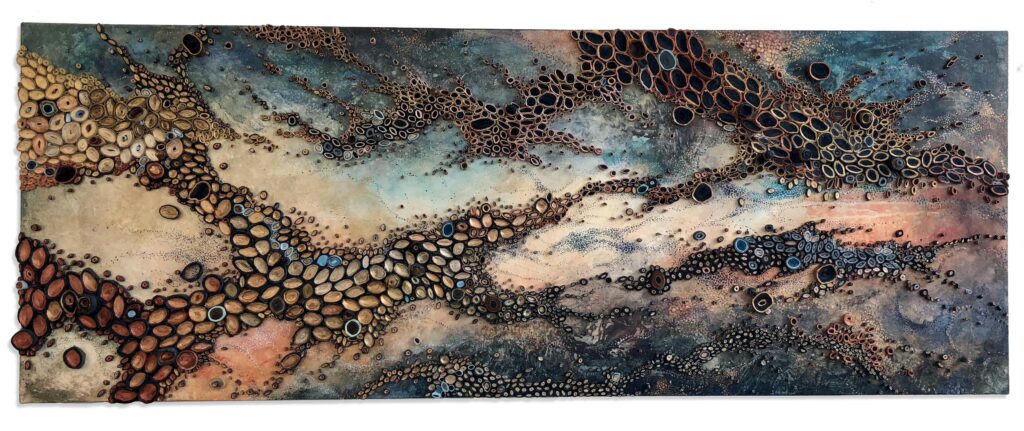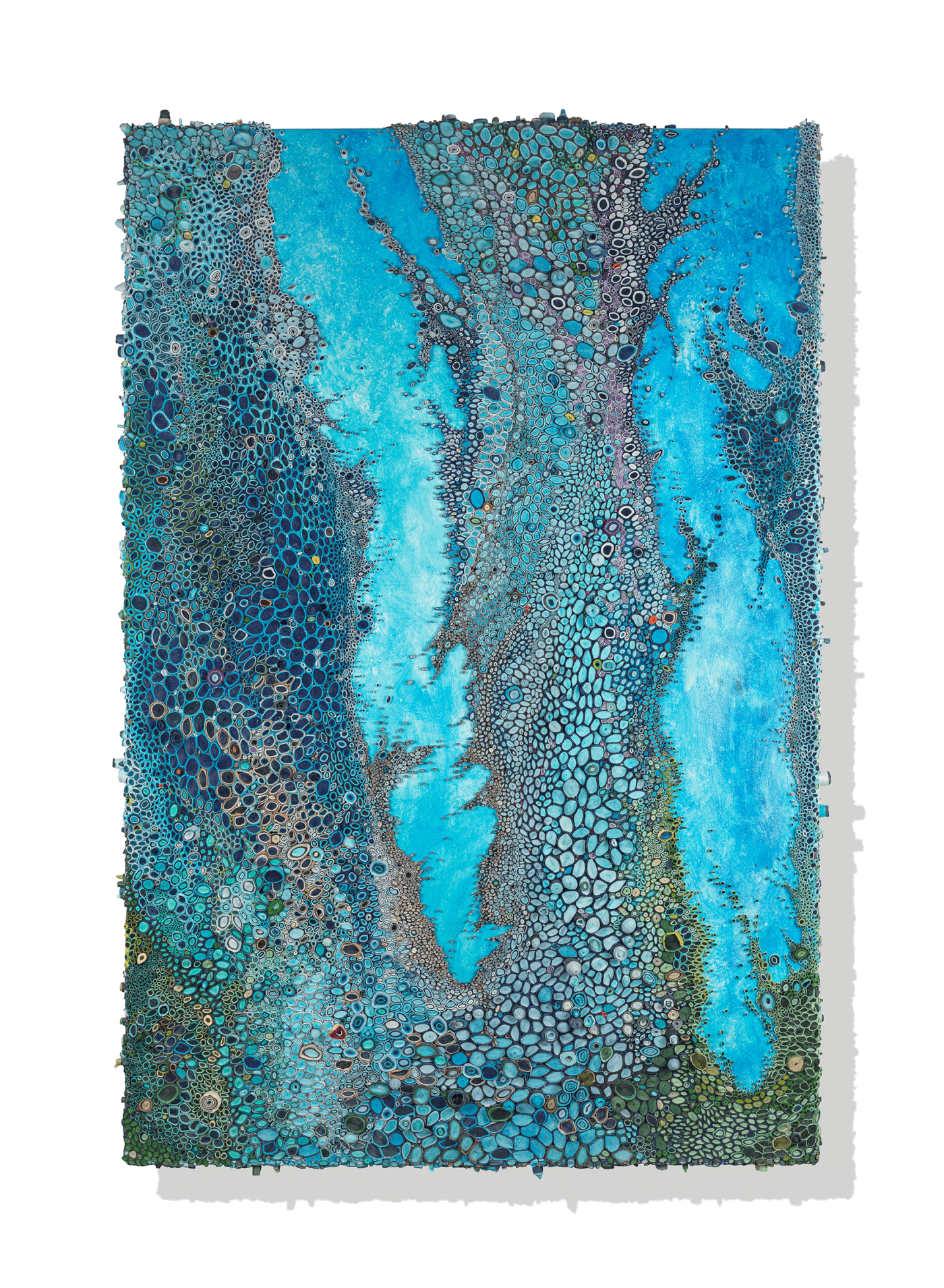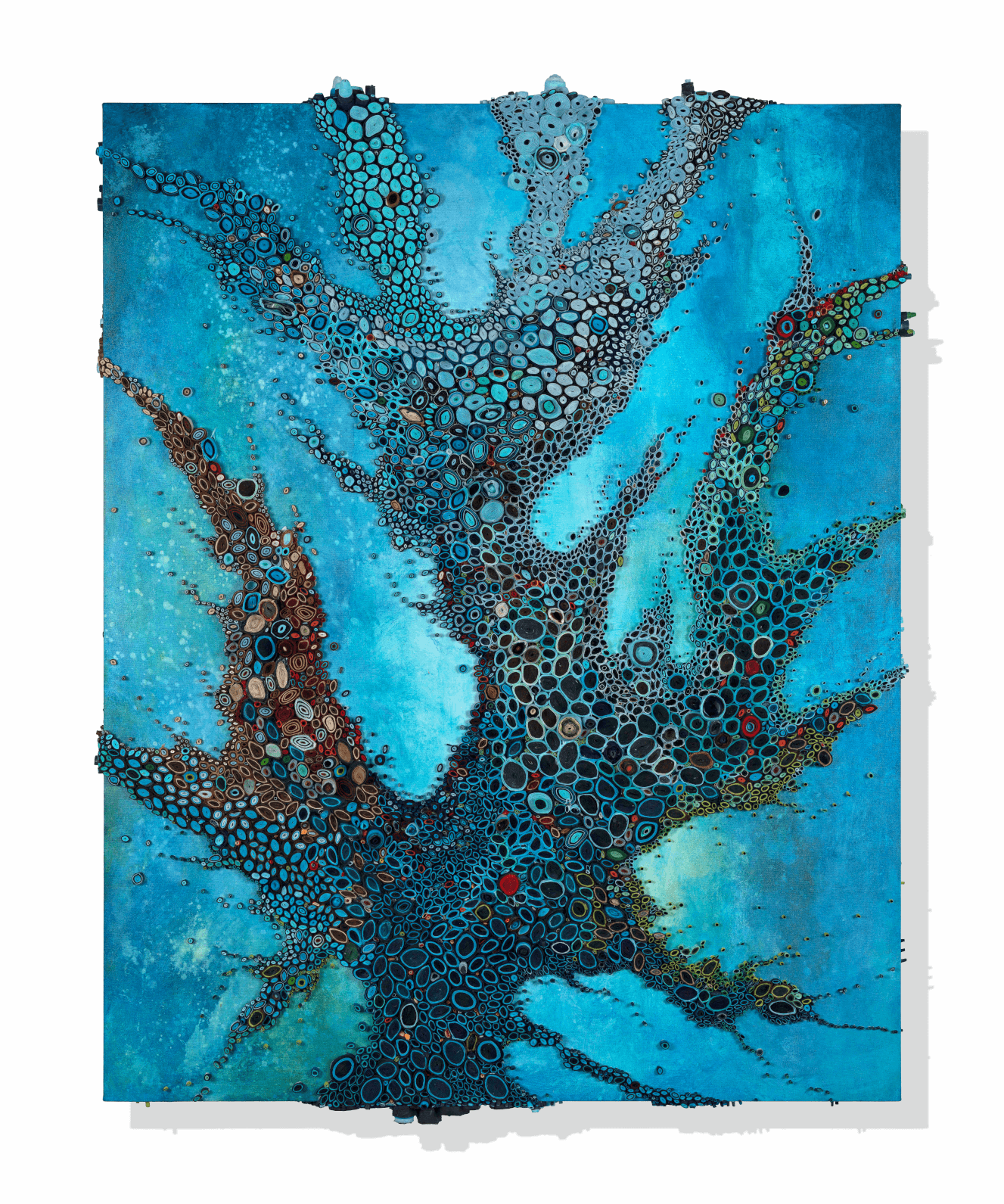
Amy Genser works with acrylic paint and rolled paper mounted onto canvas. She derives inspiration from her home state of Connecticut’s landscape, as well as from the ocean. Here, she discusses why she became a painter after pursuing a career in graphic design, how patterns in nature influence her work, and what she hopes to accomplish in the future.
“While I was in graduate school at Rhode Island School of Design, I took a class in papermaking. I found that I could create sculptural forms with the paper and had so much fun doing it that I took a detour from graphic design. One of the reasons I wanted to be a graphic designer—and didn’t feel like I could be a fine artist—was that I didn’t think I had anything to say. While I was interested in a lot of different social issues, they weren’t reflected in my artwork. If you don’t have anything to say, what are you going to make?
Landscape is the source of my inspiration, and also aerial views of our world. I love any kind of an ongoing organic process, like moving water or beehives. I also love color—it makes me happy. Neptune was inspired by water. The ocean is my favorite place to be. My family has a home on the Rhode Island coast, and I love to spend time there. Chapter 44 is a little more industrial than something like Neptune. I think of it having more of a sophisticated palette. I named it Chapter 44 because I was 44 years old when I made it. I’m looking to work more sculpturally in the future. Not only in how the work comes off the wall but how it intrudes into the viewer’s space—if you could imagine my work growing off the canvas and into the room, that’s what I want to do long term.
I purchase many different kinds of paper from all over the world, although the bulk of my inventory is from Thailand. The fibers come from the mulberry bush that is farmed in different Asian countries for the purposes of making paper. So once I have the paper, I take strips about 12 inches wide and 38 inches long, and roll them up and layer them, one color on top of the other, in order to make a roll. It’s similar to the process of making sushi. I treat the paper as my pigment—I create the colors that I want by layering the roles of paper. Before I even add the paper to my pieces, I have a substrate, which is either canvas or panel. I use acrylic paint and thin it out so that I can build layer on layer. After I have the painted background, I add the paper. Rarely do I sketch out an idea before I start, but I generally have an idea of where it’s going—it’s like doing a puzzle without the map.”



